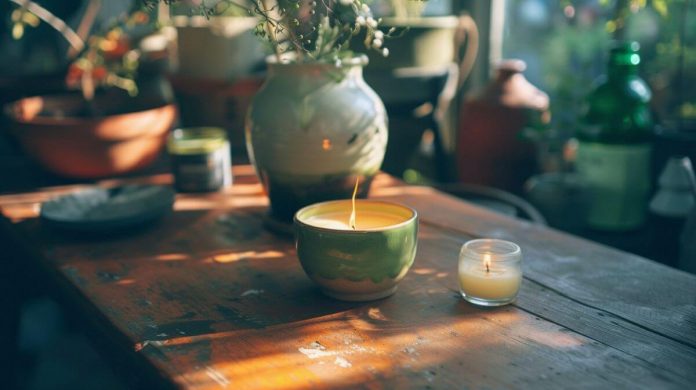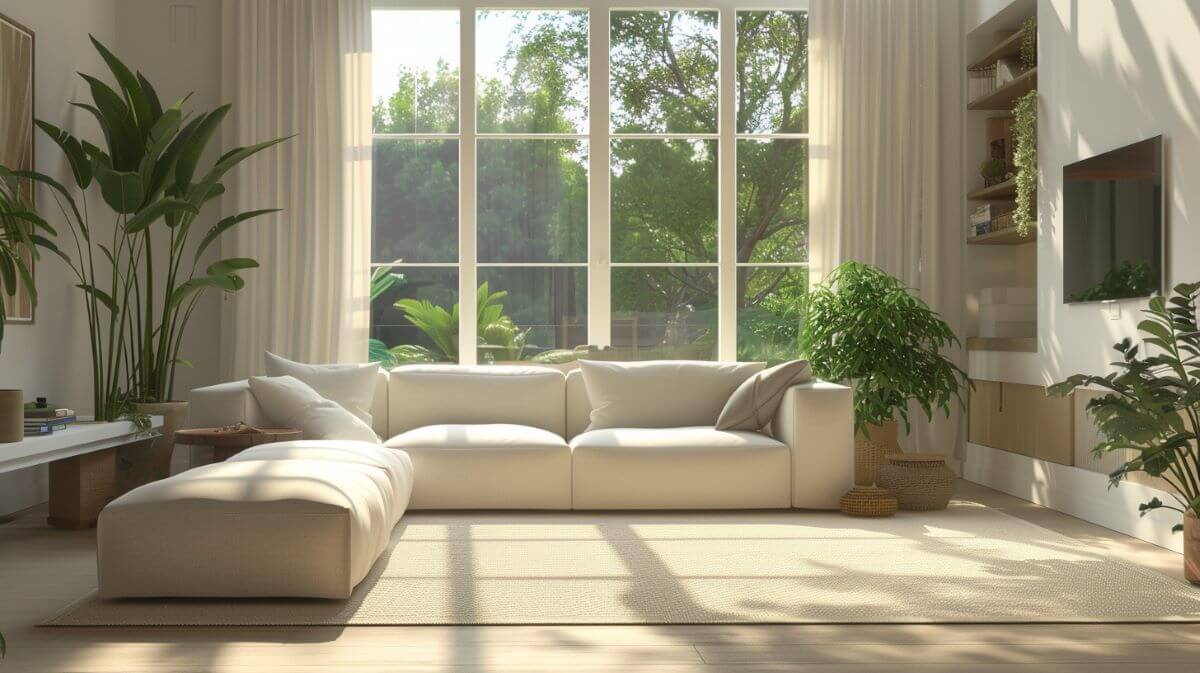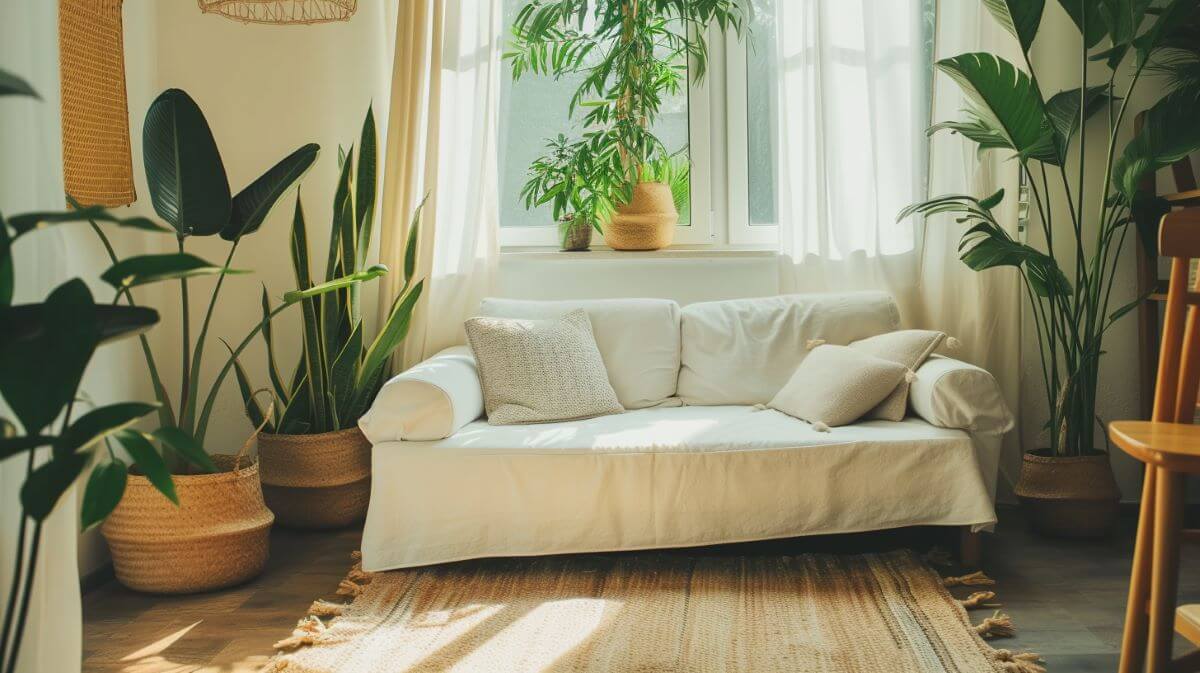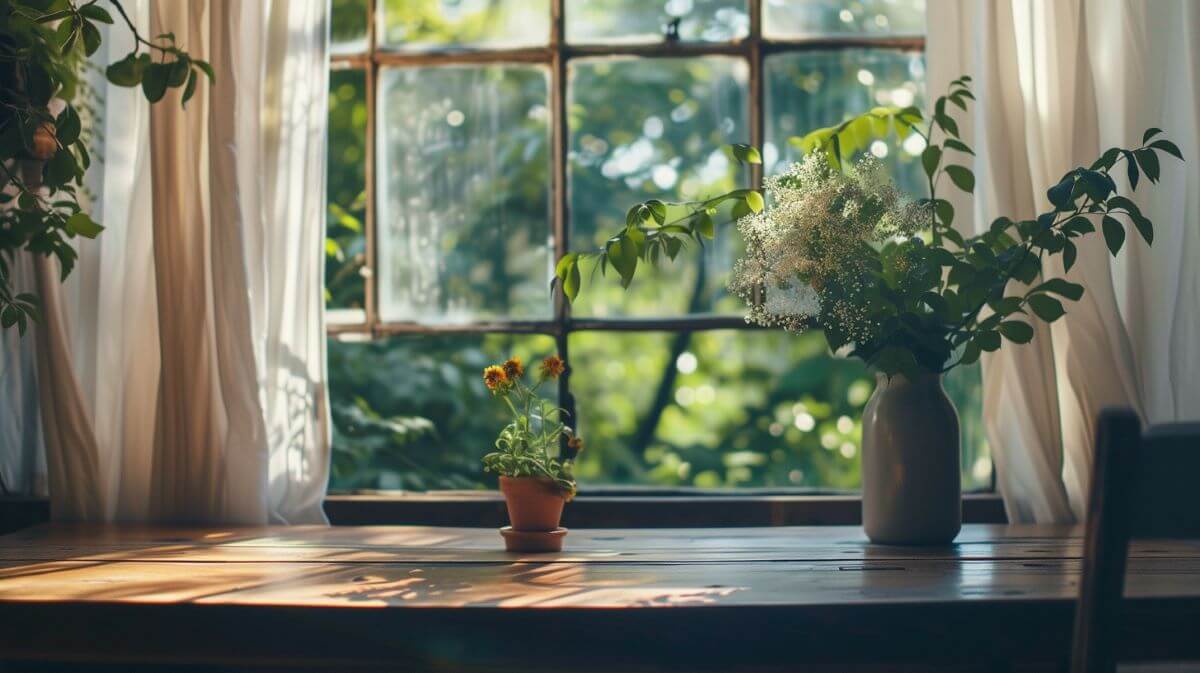
Contents
Last Updated on 13th February 2024
Slow living is a philosophy that encourages a more measured, conscious approach to life, focusing on quality over quantity, and finding joy in the ordinary and the everyday. It’s about making intentional choices that align with our deepest values, rather than being swept away by the relentless fast-paced modern life.
This approach extends into every aspect of our existence, including how we design and inhabit our living spaces. Creating a home that reflects the principles of the slow living lifestyle can transform it into a sanctuary of peace and mindfulness, a place where every object and every routine becomes an invitation to be fully present.
So here is our guide to slow living and learning to focus on what truly matters, and to appreciate the beauty of the present moment and life’s simple pleasures.

Decluttering Your Space, Decluttering Your Mind
The journey to a more mindful and intentional home begins with a declutter. By removing the excess that no longer serves us, we make room not just in our physical spaces but in our mental landscapes as well. Decluttering your home is not about stripping our surroundings bare or adhering to a strict minimalist aesthetic, but rather about choosing to surround ourselves with items that add value and meaning to our lives.
This process requires us to pause and consider what we truly need and what brings us joy, leading to a more considered and deliberate way of living. As we clear our spaces, we often find that our minds become clearer too. The act of decluttering can be surprisingly cathartic, offering a sense of liberation from the things that weigh us down and cloud our clarity. Minimalism is the path to contentment and gratitude.

Natural Elements for a Peaceful Home
Incorporating natural elements into our homes is a powerful way to create a sense of peace and connection to the world outside our doors. Materials such as wood, stone, and natural fibres bring an organic, grounding presence into our living spaces, reminding us of the beauty and simplicity of nature.
Adding plants to our décor improves air quality and adds life and vitality, creating a nurturing environment that supports well-being. Natural light plays a crucial role too, transforming the mood of a space and its inhabitants. By opening up our homes to more daylight and views of nature, we invite a sense of calm and wellbeing that echoes the slow living ethos.

Mindful Decor: Choosing Items That Matter
Selecting decor with intention is a cornerstone of creating a mindful home. This means choosing pieces that resonate with your personal story, bring comfort, or serve a purpose beyond mere aesthetics. Mindful decor is about quality over quantity, selecting items that will stand the test of time both in durability and in emotional value. This approach encourages us to think about the origins of our belongings, favouring artisan-crafted goods, ethical sourcing, and materials that are kind to the planet.
Each item in a mindful home has a reason for being there, whether it’s a piece of art that inspires, a hand-me-down with sentimental value, or furniture chosen for its functionality and beauty. This careful selection process ensures our homes are filled with items that reflect our values, support our well-being, and contribute to a sense of peace and authenticity.
Sustainable Living Choices
Adopting sustainable living choices is integral to the slow living philosophy, reflecting a commitment to making environmentally friendly decisions that reduce our carbon footprint. One area where this choice is increasingly significant is in how we manage and repair our electronic devices.
Services like Likewize’s same-day doorstep repairs offer a sustainable approach to mobile phone repairs, including mobile screen repairs and tablet repair near you, emphasising the importance of extending the life of our devices rather than contributing to electronic waste. Opting for repairs, rather than replacements, saves resources and reinforces the slow living principle of thoughtful consumption.

Spaces for Creativity and Growth
Designating areas within our homes for creativity and personal growth is essential for fostering an environment that supports slow living. These spaces can take many forms, from a quiet corner for reading and reflection to a workshop for crafting and hobbies. The key is to create an area that invites exploration, learning, and the joy of making.
This could mean setting aside a nook for painting, dedicating a room to music, or even allocating space in the garden for growing your own vegetables. These spaces remind us to slow down and engage deeply with our interests, providing an outlet for expression and innovation, and encouraging tranquillity.
It’s important to have a designated space in your home rather than a multiple purpose one, as you will reduce stress quicker as you will mentally associate the area with peace.
They offer a sanctuary from the busyness of daily life, where we can focus on developing skills, nurturing our passions, and cultivating a sense of accomplishment and well-being.

Mindful Eating and the Slow Food Movement
Mindful eating is a practice that aligns perfectly with the ethos of slow living, encouraging us to think about where our food comes from, how it’s prepared, and the impact of our food choices on the environment and our communities. The slow food movement, which champions local sourcing, traditional cooking methods, and taking time to enjoy meals, serves as a guide for how to incorporate mindfulness into our eating habits.
This approach fosters a deeper connection to food, from selecting ingredients to the act of cooking and finally, to sitting down to eat. It’s about savouring flavours, appreciating the effort that goes into meal preparation, and recognising the nutritional value of what we consume.



































